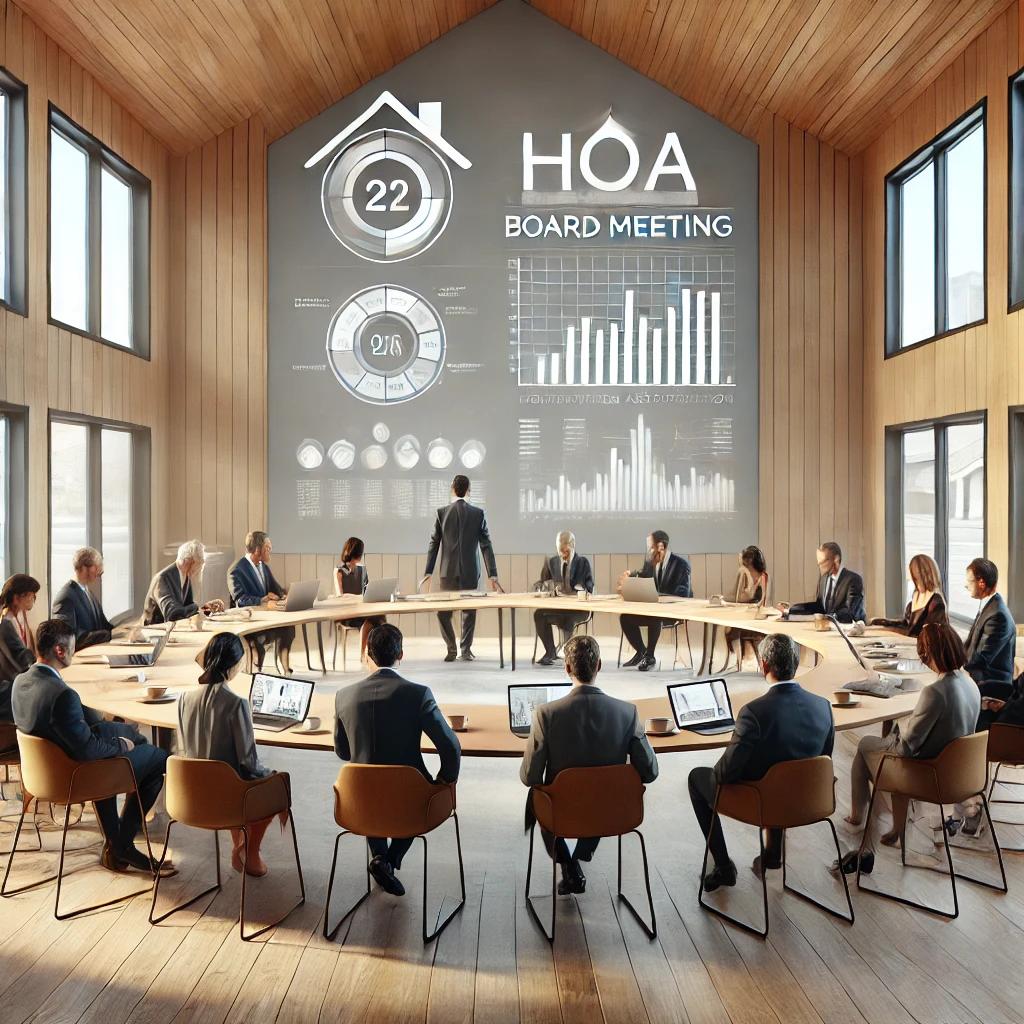Tips to Keep Your Annual Meeting on Track

Annual meetings are the most attended events in a community association’s calendar. They offer a detailed recap of the past year, highlight the association’s financial health and future plans, and perhaps most critically, allow residents to elect board members.
A high turnout is essential to meet quorum, but it can also lead to potential distractions and derailments during the meeting. Whether announcing positive developments or addressing controversial topics like increases in assessment fees, questions and discussions can easily divert attention. It’s crucial to keep the meeting productive and focused while allowing residents to voice their thoughts. Here are five strategies to ensure your annual meeting stays on course.
Have an experienced person run the meeting
Annual meetings are often more complex than regular board meetings, making it vital to have a skilled individual at the helm. A less experienced board member may struggle with managing discussions or steering the meeting back on track. Consider having your community manager lead the meeting, as they are generally seasoned in handling such gatherings and keeping them focused.
Communicate major changes in advance
Major changes can stir concerns among residents, so it’s wise to communicate them well before the meeting. Introducing significant plans for the first time during the meeting can leave residents feeling caught off guard. Notify residents about any anticipated changes ahead of time to reduce the number of questions and concerns during the meeting. Clear and proactive communication can help you manage reactions and align everyone on the reasons behind the changes.
Set aside a specific timeframe for resident participation
Resident engagement is crucial, but unstructured discussions can lead the meeting off course. Designate specific times for questions and discussions in your agenda. This could be after each topic or reserved at the end of the meeting. If discussions exceed the allocated time, it’s essential to wrap them up politely to adhere to the agenda. Consider statements like, “We’ve had some great questions, but we need to move to the next item,” to help maintain the schedule.
“Sandwich” bad news between positive agenda items
Delivering unpleasant news is challenging, but strategically placing it between positive announcements can soften the impact. Begin and conclude with good news, creating a “sandwich” effect that provides a more balanced experience for attendees.
Invite committee members to participate
A meeting dominated by one presenter can quickly become monotonous. Involve committee members to discuss their activities and achievements, adding variety and enthusiasm to the meeting. These volunteers are typically eager to share their experiences and are strong advocates for the community. For instance, the social committee chairperson could summarize past events and future plans, offering recognition that might inspire other residents to volunteer.
Annual meetings are pivotal in shaping the future of your community association. By implementing these strategies, you can ensure that your meeting remains organized and positive, fostering a sense of optimism about the community’s direction.





